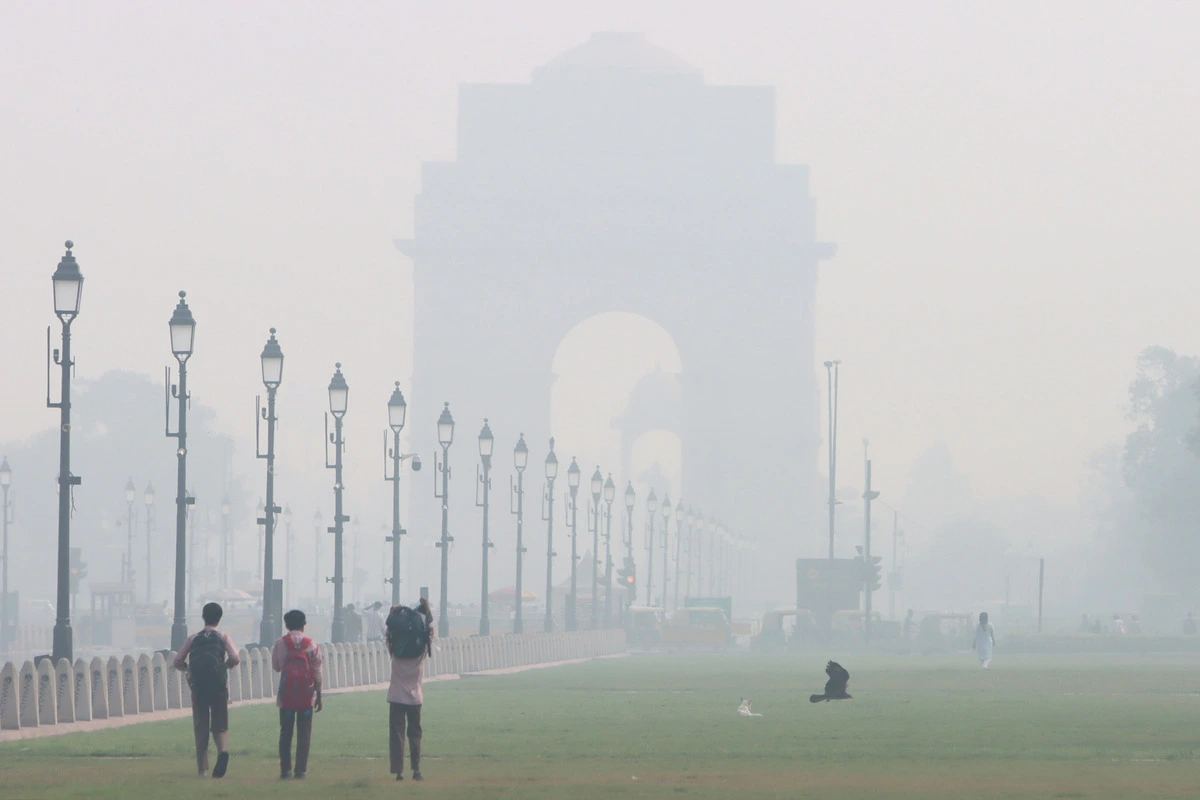
A thick layer of smog blanketed Delhi on Thursday morning, as the air quality index (AQI) reached a hazardous level of 389 at 7:15 am, categorizing the air as “very poor.” However, several parts of the national capital reported even more severe pollution levels, leaving residents grappling with dangerously unhealthy air quality.
Severe AQI Levels Across Delhi
According to data from the Central Pollution Control Board (CPCB), 12 areas in Delhi recorded AQI levels between 400 and 500, a range that falls under the “severe” category. Among the worst-hit locations were Alipur (408), Anand Vihar (405), Ashok Vihar (414), and Wazirpur (436), with these areas facing dangerously high levels of air pollution.
Also Read: Maha Kumbh 2025 To Feature All-Terrain Vehicles For Enhanced Fire Safety & Security
Other areas experiencing severe pollution included Bawana (418), Dwarka Sector 8 (401), Jahangirpuri (435), Mundka (413), Nehru Nagar (411), Punjabi Bagh (407), Rohini (407), Shadipur (412), and Okhla Phase 2 (389). These figures indicate significant challenges in managing air quality in the capital.
Widespread “Very Poor” Air Quality
Meanwhile, 26 other areas in Delhi reported AQI levels exceeding 300, with readings between 300 and 400. Notable areas in this category included Aya Nagar (369), Chandni Chowk (339), Mathura Road (343), and Dr. Karni Singh Shooting Range (368). Other locations like Jawaharlal Nehru Stadium (354) and NSIT Dwarka (365) also experienced poor air quality.
Several other key locations across the city recorded similarly high levels of pollution, including Major Dhyanchand Stadium (372), Najafgarh (366), and Sonia Vihar (394), contributing to the city’s overall air quality deterioration.
Air Quality Index Explained
To help gauge the severity of air pollution, the AQI categorizes air quality as follows:
- 200–300: Poor
- 301–400: Very Poor
- 401–450: Severe
- 450+: Severe Plus
On Wednesday, Delhi’s AQI had already fallen into the “severe” category, but slight improvements observe in some areas on Thursday. Despite this, the city continues to grapple with hazardous levels of air pollution, posing serious health risks for residents.
Delhi’s Efforts To Tackle Pollution
In response to the worsening pollution, the Delhi government last week implemented stringent measures under Stage 3 of the Graded Response Action Plan (GRAP). This includes a ban on private BS III petrol and BS IV diesel vehicles, with violators facing fines up to Rs 20,000, as per Section 194(1) of the Motor Vehicle Act, 1988.
The Supreme Court also interven on Monday, questioning the Delhi government on how the ban on firecrackers was violated during Diwali celebrations, which are known to contribute significantly to the city’s air pollution.
Ongoing Concerns Over Yamuna River Pollution
In addition to the alarming air pollution, the toxic pollution in the Yamuna River continues to raise concerns. Thick froths of toxic foam have been seen floating in sections of the river near Kalindi Kunj and Okhla Barrage, further compounding the environmental challenges facing the city.
To read more such news, download Bharat Express news apps


















